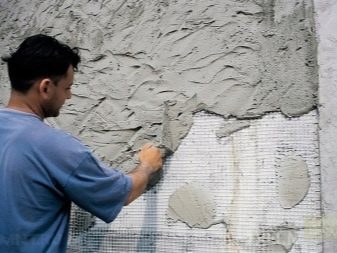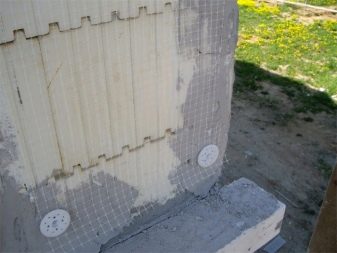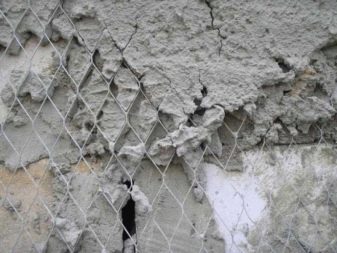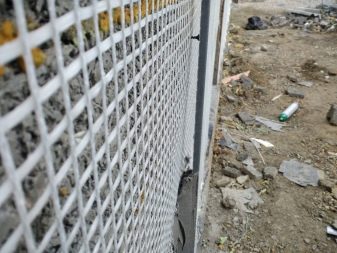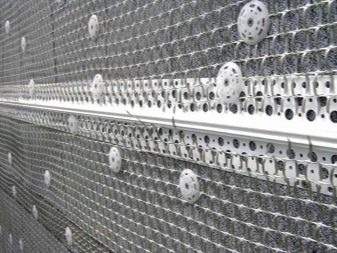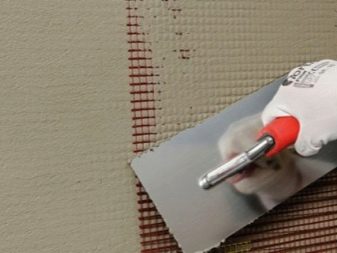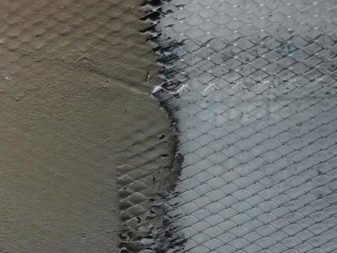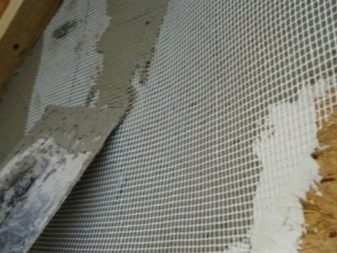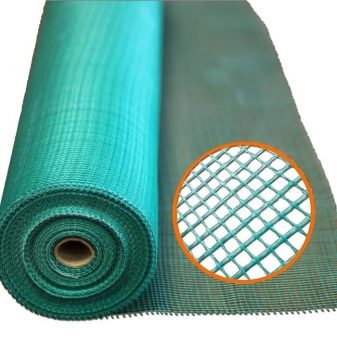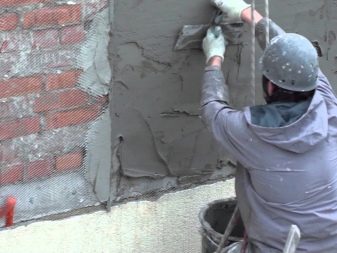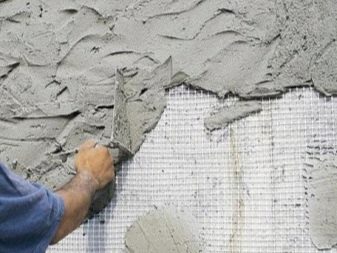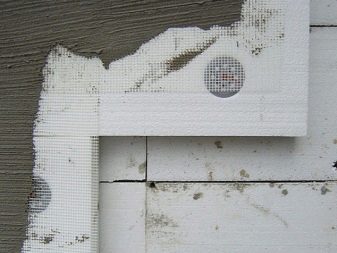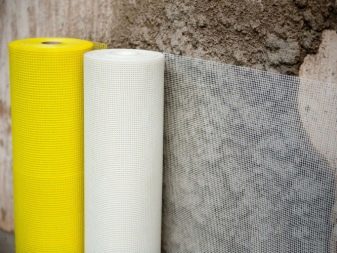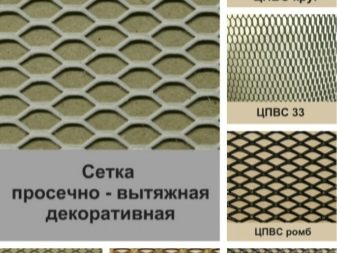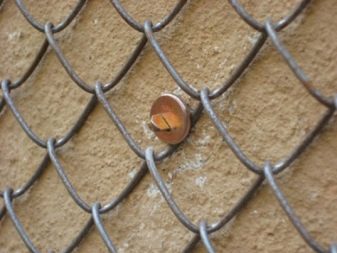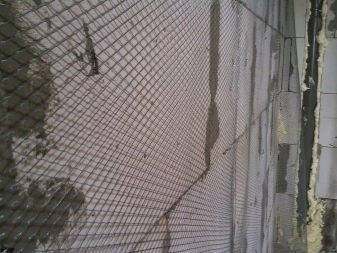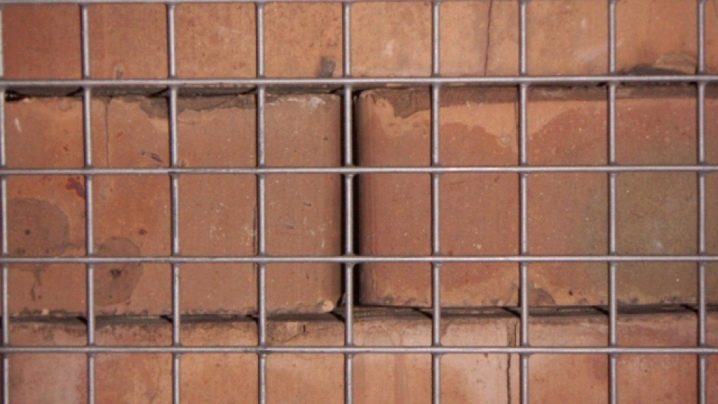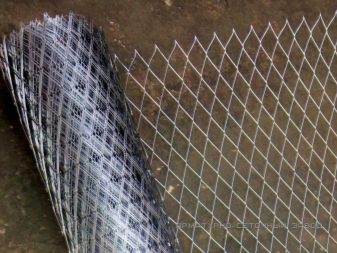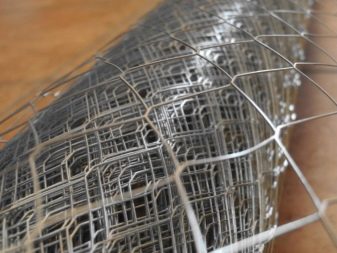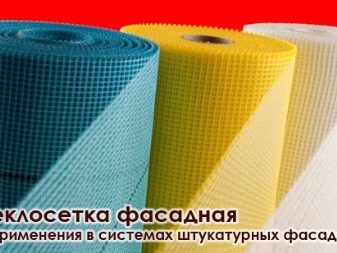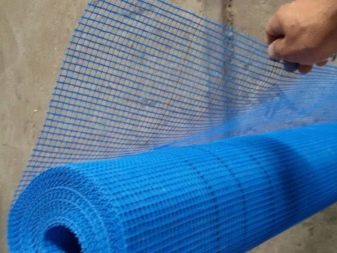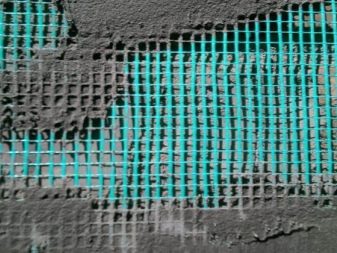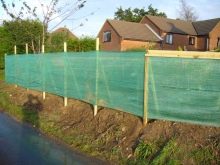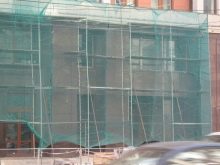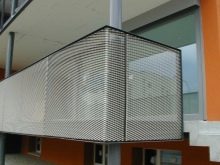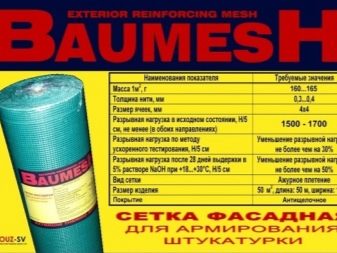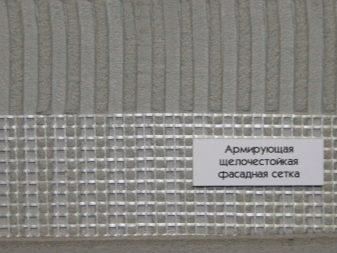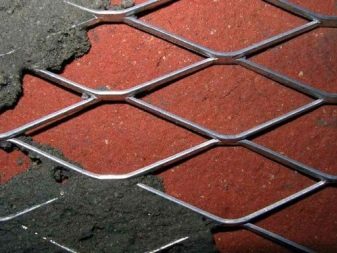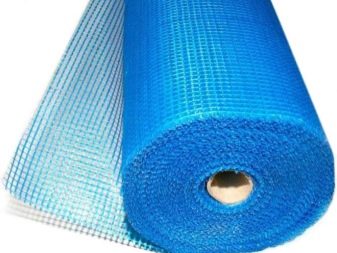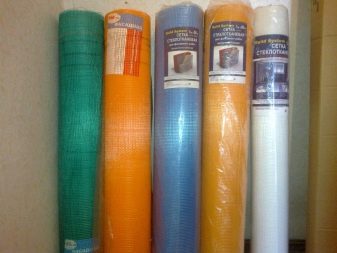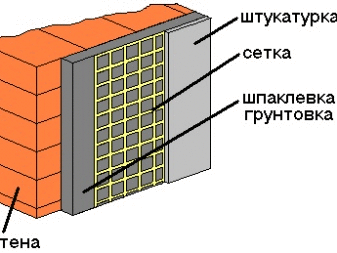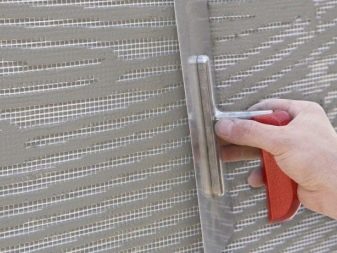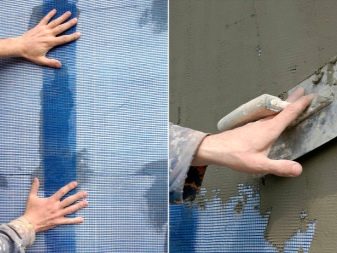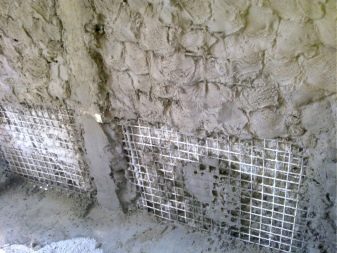Facade mesh for plaster: features of choice and installation tips
The attractiveness and durability of the facade are important characteristics for any building. In order to make a high-quality exterior finish, various materials are used, including plaster, work with which requires additional products that increase its efficiency and aesthetic qualities. One of these items is the facade mesh for plaster.
Features and purpose
Plastering of walls is a construction process in the course of which plaster mixtures of various texture and color can be used. Compositions for exterior work are available on acrylic and silicone base, on the basis of liquid glass or cement, composite mixtures.Each type of product has its own individual properties and features, but it unites all types of plaster with one nuance - the application technology requires a special mesh. It usually fits between the finish and the base of the building, in some cases - on the insulating material.
The main function of the facade mesh is the bond of the plaster composition. It provides additional strength to the solution in the process of its application to work surfaces that have large dimensions, which is important for high-rise buildings.
Quite a common practice is the use of facade nets during the finishing of new houses, where it is assumed that the design will give a draft. The presence of the facade mesh helps eliminate the risk of cracks on the surface of the walls, positively affecting the mechanical strength of the plaster.
But, in addition, the product can be used for other purposes during the finishing works - providing high-quality adhesion of reinforced plaster mixes and waterproofing materials, to seal the corners of the structure, for repair work with the facade of the building.For each type of work a specific type of product is used, having the necessary qualities and properties.
The facade mesh has recently become widely used along with finishing, several decades ago, to create such a layer, stuffed shingles made of wood were used to create this layer. However, the advantages of the grid allowed it to make a worthy competition to fasten a wooden frame for finishing, so the product began to operate everywhere.
Facade plaster has a high aesthetic performance, and also goes well with a variety of design, in addition, the composition has a long operational period.
The following properties can be attributed to the positive features of the grid for plaster:
- high level of base protection against defects;
- reliable fastening of joints of materials;
- the product can be used to work with most finishing materials for finishing;
- the presence of the grid allows free air to circulate through the walls;
- some types of products provide an even application of the composition;
- Most of the materials are resistant to alkali-containing substances, therefore the grid does not deform or decompose.
Among the main functional tasks of the facade mesh, the following should be highlighted:
- providing additional thermal insulation;
- base reinforcement;
- waterproofing walls;
- protection against deformation of the finishing;
- protection of grounds from the effects of negative environmental factors;
- thanks to the cellular structure, the adhesion of the plaster composition to the surface is ensured;
- the product increases the service life of the finishing composition.
Kinds
Based on the main raw materials used for the manufacture of facade mesh for plaster, they are classified as follows:
Polymer
In this case, polymers - polyethylene, PVC, nylon - act as the basis. Cells in products can be in the form of a diamond or square. The most popular products, taking into account the cell size, are diamond-shaped nylon products 10x10 mm, 15x15 mm, 50x50 mm, as well as meshes with square cells 10x10 mm, 30x30 mm, 40x40 mm, 50x50 mm.
According to experts, the most suitable products for facades are meshes with square cells 10x10 mm.
It is worth noting the main advantages of polymer products:
- corrosion resistance;
- due to the minimum mass of products for the installation of the grid does not require reinforcement of the foundations of the building;
- products are sold in rolls, so it is convenient to transport them, in addition, the installation of such a product is facilitated;
- raw materials are absolutely safe for humans;
- Polymer mesh has a high level of moisture resistance;
- the product maintains a five-centimeter layer of plaster composition.
The disadvantages of products include the following characteristics:
- products are not resistant to high temperatures;
- products are destroyed under the influence of alkali;
- not used for plaster, the application of which requires a layer thickness in excess of 5 cm.
Metallic
During the production of the product, thin rods of various types of steel, as well as non-ferrous metal alloys are used. The latest products are expensive.
To increase the quality of their products, some manufacturers additionally process products with special compositions based on polymers, zinc or tin.
Based on the method of production of metal facade nets, they are divided into the following subspecies:
- Expanded metal Features of the work on the manufacture of such products are to use a solid sheet of metal, on which the cells of a given size are cut. Such products are necessary for applying the plaster composition at the corners of buildings with complex shapes.
- Rabitz. It consists of spirals intertwined. Products may have additional coverage or be sold without it.
- Welded products. The raw material for manufacturing is fittings, which are interconnected by welding. Such grids are light, with a diameter of reinforcement up to 6 mm, and also heavy, where the diameter can reach 40 mm.
For the application of plaster, use of metal mesh in rolls of 2-3 meters with a cell size of 10x10 mm, 15x15 mm, 20x20 mm.
Advantages of metal products:
- a large indicator of adhesion with the composition;
- the convenience of use;
- goods with additional coverage are resistant to aggressive substances.
The disadvantages are the occurrence of corrosion on the product, where the protective layer was damaged. In addition, the metal mesh is a good conductor of current, as a result of which it cannot be installed in close proximity to electrical grids.
Fiberglass
For the manufacture of goods using fiberglass yarn.On the market, the net is presented in rolls and can be white, gray, black, yellow or other colors.
The density of products ranges from 145 to 160-165 g / m2, the size of the cells of the glass cloth mesh is 5x5 mm.
It is worth noting the main positive features of the products:
- inert to chemicals;
- has a high resistance to temperature fluctuations;
- small weight of products;
- refers to the type of non-flammable products;
- does not conduct current;
- different elasticity;
- products are not deformed by ultraviolet radiation;
- fiberglass is absolutely safe for human health.
During the operation of products, product deficiencies were not noted.
Application area
All facade grids for plaster are remarkable for a wide range of applications, in addition to use in conjunction with plaster mixtures. The following cases should be noted in which products can be used:
- from the grid make fencing structures, for example, fences;
- the product is used as covering products in the course of works with facade finishing;
- using nets decorate loggias and balconies;
- Some products are used during base puttying.
Tips for choosing
Since the assortment of facade nets is constantly supplemented with new products, it may be difficult to choose the right product. In order to choose the right mesh, it is necessary to pay attention not only to the type of raw material from which it is made, but also to a number of other nuances.
For products made of synthetic materials, as well as for glass fiber grids, the most important characteristic is resistance to aggressive media and strength under mechanical stress. It is useful to pay attention to weaving - the strength of the product directly depends on its quality.
You can focus on the information that the manufacturer indicates on the package. The density of the grid will talk about the maximum allowable level of breaking load on the material. For flat walls, the value must be at least 1800 N.
As far as alkali-resistant mesh, manufacturers also usually write on the packaging. But this indicator can be checked independently. To do this, the product is immersed in a soap solution for several days, after which the mesh is inspected. If it changed its color and began to decay, it means that the products are of low quality and cannot be used in work.We should be especially careful with products made in China, and this applies not only to reinforcing and painting nets.
Metal armored nets with galvanized coating have a longer service life compared to uncoated products. Welded products are not always reliable, so it is better to stay on expanded metal products. As for the size of the cells, the preference for one or another product should be given on the basis of the specificity of the plaster composition, stages of work and thickness of the applied layer. Finishing requires the use of a mesh with the smallest cells, for decorative plaster, you can purchase a fiberglass mesh with medium cell sizes. For a plaster layer with a thickness of more than 5 cm, preference should be given to metal products.
General rules for visual assessment of the quality of facade grids:
- edges in a roll should be smooth;
- weaving should not contain defects;
- products with damaged packaging should not be purchased;
- Each roll must have a product information label.
Installation rules
Work with a metal grid are carried out according to the following technology:
- first the base is cleaned and all deep defects are removed;
- the walls are measured in height, after which the product of the required size is cut off;
- a mounting hole is drilled from the top, a grid is fixed with the help of screws;
- after that fixation of the product along the entire length is performed;
- the product is wetted and plastering work begins.
Work with the polymer mesh and fiberglass products are performed as follows:
- cleaning the surface from possible contamination;
- primer and putty walls;
- bases are measured and, based on the obtained values, the necessary pieces of the grid are cut off;
- the application of the adhesive composition - on the package indicates recommendations for the consumption of glue;
- then the grid is applied to the base, with the help of a spatula the glue is leveled over the entire product;
- after drying the composition is carried out plastering.
Tips and tricks
In order to qualitatively carry out the exterior finish of the building, you should follow the instructions that will help avoid the most common mistakes:
- work should be performed only in dry weather with a humidity of no more than 80% and a temperature in excess of +5 degrees;
- care should be taken to protect layers of plaster from exposure to ultraviolet radiation, precipitation and strong gusts of wind;
- if you plan to purchase a color mixture, you must buy materials from the same batch, made according to GOST and from the same manufacturer, in order to avoid discrepancies in colors and shades;
- between the base and the insulation should not be a large distance of 80-90 cm, the most optimal distance will be about 45 cm.
It is necessary to avoid situations in which even the use of facade plaster mesh does not help to eliminate the formation of defects during plastering the foundation:
- In the process of uneven drying of layers of plaster applied by a layer of different thickness, especially in the corners, a defect of uneven coloring may occur. Therefore, it is necessary to carefully control the thickness of the composition of the layer, with which work is carried out over the entire area of the walls.
- Due to errors made during the preparatory work with the bases or as a result of their absence, the peeling of the plaster composition can occur, regardless of the presence of the grid. Similar situations may also occur when the mixture is too thick.
- Conversely, a very thin layer of material will cause the existing irregularities on the walls to be visible.
- Even the highest-quality and correctly selected nets will not be able to eliminate the occurrence of unpleasant situations associated with the application of a gypsum mortar to the walls. In some cases, such a plaster is peeled off over the entire area of the wall. Such a negative feature is explained by the fact that the composition reacts with moisture from the rain, there is an intensive absorption of the liquid and the layer of plaster lags completely behind the base.
To learn how to properly install the facade grid, see the following video.

